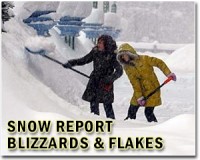| . |  |
. |
Moscow (AFP) Feb 18, 2011 Moscow's mayor has asked local services to lower heating in the Russian capital despite extremely low temperatures, after residents complained of overheated apartments, a report said Friday. "If buildings are overheated, this means that the networks (of urban heating) are badly adjusted. We need to take care of it," Sergei Sobyanin said according to the Ria Novosti news agency. The mayor made the proposal during a meeting after deputy mayor Piyotr Biriukov pointed out that despite the sub-zero temperatures, residents complained of being too hot instead of too cold, the report said. District heating, a system that connects residential buildings to centralised municipal heating, is widespread in Russian cities. Moscow has endured in recent days close to minus 30 degrees Celsius (minus 22 Fahrenheit) in the early mornings, which, if not a record low, is a dozen degrees lower than the average temperature for February. The economies of scale that that are theoretically peculiar to this type of system are meanwhile undermined by waste and the inability to regulate heating in apartments other than opening or closing windows in the middle of winter.
earlier related report "The ice road is opened in years when the winter is cold enough to freeze the sea strongly enough to carry cars," Raido Randmaa from Estonia's highways administration told AFP Friday. Under a special law, Estonian authorities can give the green light to ice roads when the marine ice sheet becomes at least 25 cm (9.8 inches) thick, according to Randmaa. "But we usually wait until it gets to 30 cm (11 inches) everywhere," he explains, adding the ice sheet was judged thick enough for traffic last week. The grand opening of the ice highway between the port of Rohukula in north-east Estonia and Hiiumaa island -- population slightly over 10,000 -- is always a big event for the islanders. "The ice-bridge is always very popular and becomes very crowded on weekends," Randmaa explains. Authorities are strict about safety on the ice, with patrols keeping watch around the clock. "One of the main rules is that a new car is allowed on the ice road only every 1-2 minutes, and drivers should not get too close to the car ahead of them because otherwise the ice might crack," Randmaa told AFP. Only Mother Nature knows how long Europe's longest ice road will stay open this year. In 2010, it lasted just 11 days in February. "Our greatest enemy is not just warm weather but also the extreme cold that could start causing cracks inside the ice," Randmaa said. Compared to the usual ferry service, the ice-road will cut travel time from Hiiumaa, Estonia's second largest island, to mainland Estonia by nearly two hours, making the trip only around half an hour.
Share This Article With Planet Earth
Related Links It's A White Out at TerraDaily.com
 Seven hurt as record snow buries S. Korea market
Seven hurt as record snow buries S. Korea marketSeoul (AFP) Feb 16, 2011 Seven people were injured when an awning at a South Korean market collapsed Wednesday under the weight of record snowfall, the local fire brigade said. Nine people were pulled from under the wreckage, with seven treated in hospital, a spokesman for the fire and rescue service in the northeastern coastal city of Samcheok told AFP. Contrary to initial reports, no deaths have been reported ... read more |
|
| The content herein, unless otherwise known to be public domain, are Copyright 1995-2010 - SpaceDaily. AFP and UPI Wire Stories are copyright Agence France-Presse and United Press International. ESA Portal Reports are copyright European Space Agency. All NASA sourced material is public domain. Additional copyrights may apply in whole or part to other bona fide parties. Advertising does not imply endorsement,agreement or approval of any opinions, statements or information provided by SpaceDaily on any Web page published or hosted by SpaceDaily. Privacy Statement |